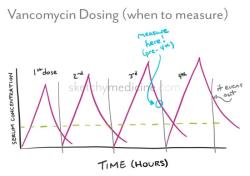Is physical therapy harder than occupational therapy?
Physical therapy (PT) and occupational therapy (OT) are both healthcare professions that focus on improving the quality of life and functional abilities of individuals. However, they have distinct goals, approaches, and areas of specialization. Here's a comparison of physical therapy and occupational therapy:
Physical Therapy (PT):
Focus: PT primarily focuses on improving physical function, mobility, and overall physical health. It aims to restore, maintain, or enhance a patient's physical abilities.
Specialization: Physical therapists often work with patients recovering from injuries, surgeries, or medical conditions that affect the musculoskeletal system, such as orthopedic issues, sports injuries, and neurological disorders.
Goals: The main goals of physical therapy include reducing pain, improving strength, flexibility, balance, and coordination, and helping patients regain mobility and independence.
Treatment Techniques: PTs use techniques such as manual therapy, therapeutic exercises, stretching, joint mobilization, and modalities like heat, cold, and ultrasound to address physical limitations.
Settings: Physical therapy services are commonly provided in hospitals, outpatient clinics, rehabilitation centers, and sports medicine facilities.
Occupational Therapy (OT):
Focus: OT focuses on helping individuals achieve independence in their daily activities, known as "occupations." These activities can include self-care tasks, work-related activities, leisure pursuits, and more.
Specialization: Occupational therapists work with a wide range of individuals, including those with physical, cognitive, developmental, or psychological conditions that impact their ability to perform daily activities.
Goals: The primary goals of occupational therapy are to help individuals develop or regain the skills and strategies needed to engage in meaningful daily activities and to adapt their environments as necessary.
Treatment Techniques: OTs use a holistic approach, addressing physical, cognitive, emotional, and environmental factors. Interventions may include adaptive equipment, assistive technology, sensory integration therapy, cognitive training, and skill-building exercises.
Settings: Occupational therapy services can be provided in various settings, including hospitals, rehabilitation centers, schools, mental health facilities, and home care.
Key Differences:
Scope: While both professions aim to improve a person's quality of life, physical therapy primarily addresses physical function and mobility, whereas occupational therapy has a broader focus on daily living skills and activities.
Approach: Physical therapy typically uses a more targeted and specialized approach to address specific physical impairments, while occupational therapy takes a holistic approach to address the individual's overall well-being and functioning.
Patients: Physical therapists often work with patients recovering from injuries or surgeries, while occupational therapists work with individuals across the lifespan with a wide range of conditions, including developmental and cognitive challenges.
In many cases, physical therapists and occupational therapists collaborate to provide comprehensive care for patients, especially when an individual's needs encompass both physical and functional aspects. Ultimately, the choice between physical therapy and occupational therapy depends on an individual's specific goals, needs, and medical condition.













